Lahmacun is one of the most popular foods in Turkey. And no wonder. This crispy flatbread with meat is an absolute delight! Here’s the recipe I use to make traditional lahmacun at home.
After living in Istanbul for the last six years, I’ve had my fair share of lahmacun. Most of them when I’ve been out and about, looking for a quick lunch in between errands.
In many ways, lahmacun is the perfect lunch snack. It cooks in minutes and is quick to eat. It’s filling, but nowhere near as heavy as pizza. And you can stuff it with vegetables and roll it up like a lahmacun wrap. Perfect!
That said, the best lahmacun I’ve ever had remains the one I used to have at Antepliler restaurant in London. Perhaps because it’s where I had my first lahmacun. Perhaps because their all-Turkish staff and high-quality ingredients simply make a very, very good lahmacun,
The second best? The one I make at home, using this recipe.
What is lahmacun?
Lahmacun is a crispy flatbread usually topped with meat. It’s sometimes referred to as Turkish pizza, though their origins aren’t the same (more on that below). Lahmacun is even thinner than even the thinnest of Italian pizzas. And it’s never got cheese on it.
Instead, you serve it with a side of lemon wedges and fresh salad vegetables of your choosing. A handful of fresh flat-leaf parsley is common. Others add sliced tomato. At Antepliler restaurant, they go the whole log and give you a small bowl of a few simple salads. Red cabbage salad, shredded carrot, flat-leaf parsley, tomato.
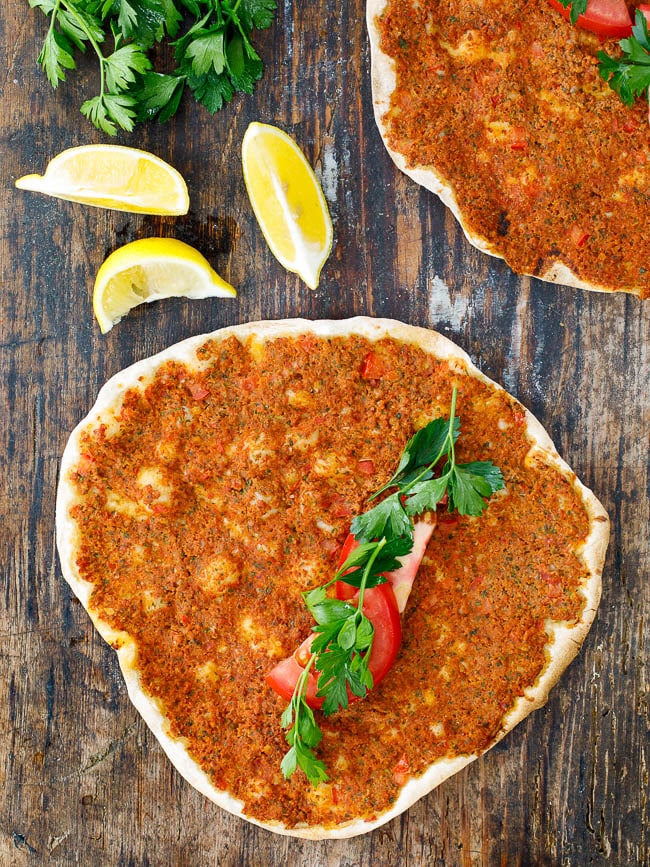
Whatever side salad they give you, the purpose is not to eat it like a side salad. Instead, you put it on top of your lahmacun. Then you roll it up and eat it like a wrap.
As such, lahmacun is more like a deliciously flavoured wrap than Italian pizza.
Turks love sharing food, but lahmacun is served on individual plates. Since it’s so thin, with a topping there for flavour more than for filling you up, many always order two lahmacuns in one go.
In kebab restaurants, they often serve mini lahmacun as a meze. In Turkish this is called ara sıcak – literally “middle warm”. That means they serve it after the cold meze, but before the kebabs.
Different types of lahmacun
By far the most common version of lahmacun is made with finely chopped lamb, onions, parsley and those two oh so typical Turkish ingredients: tomato paste and red pepper paste. Often, the waiter will ask whether you also want garlic in your lahmacun. Sometimes the garlic version is even sold as “special lahmacun”!
Done the proper way, they chop the mixture by hand until very fine. For most people at home, minced lamb is a little more realistic. A mixture of lamb and beef, or indeed just beef, is also common.
This version of lahmacun is omnipresent in Turkey. It’s what you will get in the vast majority of restaurants selling the stuff.
It’s also the type of lahmacun you’ll get the recipe for below!
Locally, however, lahmacun toppings often vary with the seasons.
According to A Taste of Sun & Fire, the brilliant book on Gaziantep home cooking, a vegetarian version of tomato and lots of flat-leaf parsley is popular in summer. They often serve them with a side of soft aubergine flesh instead of the salad mentioned above, for spooning onto your lahmacun before rolling up to eat.
In winter, a version very heavy with onions (replacing the fresh tomatoes) is popular. Some even add finely chopped quince to the mixture for an even more interesting sweet flavour.
The origins of lahmacun
Many people refer to lahmacun as Turkish pizza. It’s a description I take issue with, partly for the reasons mentioned above. But also because it suggests a false ancestry.
As with most foods popular in the Eastern Mediterranean, it’s unclear exactly where and when lahmacun originated. Its Turkish name comes from the Arabic expression “meat with dough”. Dishes like this were made in the region as early as millenia ago.
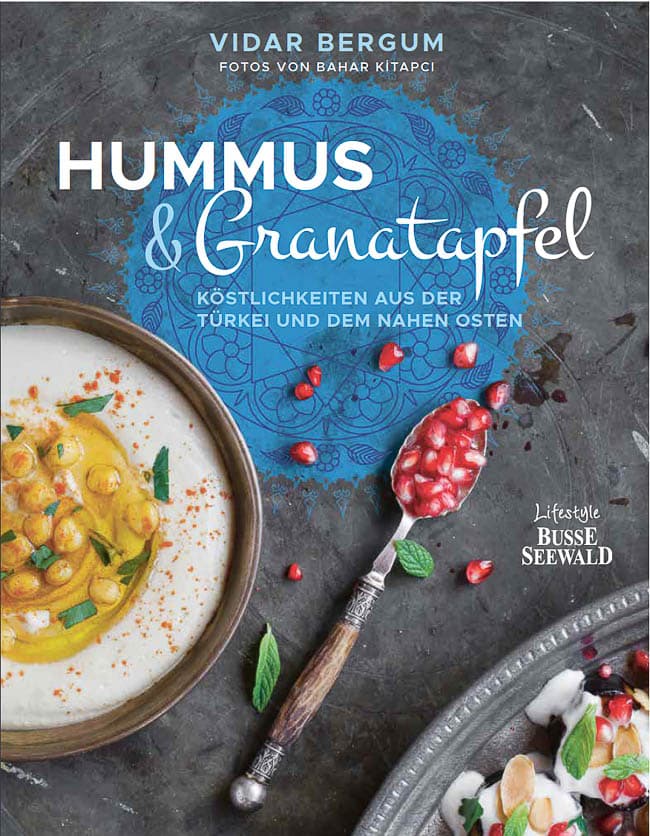
Lahmacun was one of many dishes to rise to prominence during the Ottoman Empire, primarily in the Levant. Indeed, the dish was primarily found in south-eastern parts of Turkey, Armenia, Syria, Lebanon and Iraq. The dish didn’t really reach Istanbul in any meaningful way until the internal migrations brought workers from the country’s Eastern parts to Istanbul from the 1950s onwards.
For those reasons, you’ll also see the dish referred to under a range of names. In Lebanese restaurants you’ll often see it as lahm-bi-ajin. Due to its prominence in Armenian cuisine, some also refer to it as Armenian pizza.
What is Turkish pizza?
Let’s get one thing straight: There’s no such thing as Turkish pizza. Leavened flatbreads topped with all manner of things have been around Turkey and the Middle East for much, much longer than Italian pizza.
That said, similar dishes do of course exist. Lahmacun is one of them. Pide (which shares etymology with both pizza and pita) is another, and much closer, relative. I’ll share my recipe for the pizza-like version of pide shortly – in the meantime enjoy the plain pide eaten alongside the main course.
So what is the difference between lahmacun and pide?
In fact, the two differ in terms of texture, flavour and shape.
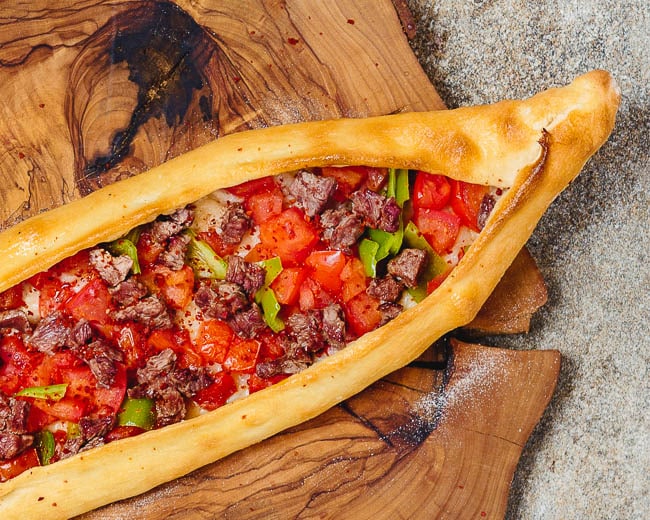
First, lahmacun is circular. Pide is oval or boat-shaped.
Lahmacun is very, very thin. Pide can also be thin, but not as thin as lahmacun. Also, it’s got a thicker crust.
Finally, and perhaps most importantly, you can add all manner of chunky toppings to a pide. Including cheese. For lahmacun, you always finely mince the topping and spread it in a very thin layer.
As such, pide is much closer to pizza than what lahmacun is.
The key to making delicious lahmacun at home
Making lahmacun at home is surprisingly easy! They may not look as perfect as the ones that the lahmacun bakeries make, but they can be just as tasty.
The main difference between the home cook and the professional lahmacun maker, is the oven. A proper lahmacun baker uses a scorchingly hot stone oven – wood fired if he’s a purist. Baked to perfection in a minute or two!
At home, you can achieve much of the same effect by using a pizza stone or baking stone. Also make sure to whack your oven as high as it can go.
If you don’t have a pizza stone or baking stone, you’ll still get a delicious lahmacun. But it’ll cook a little slower. This can make it a little drier than a lahmacun baked by professionals.
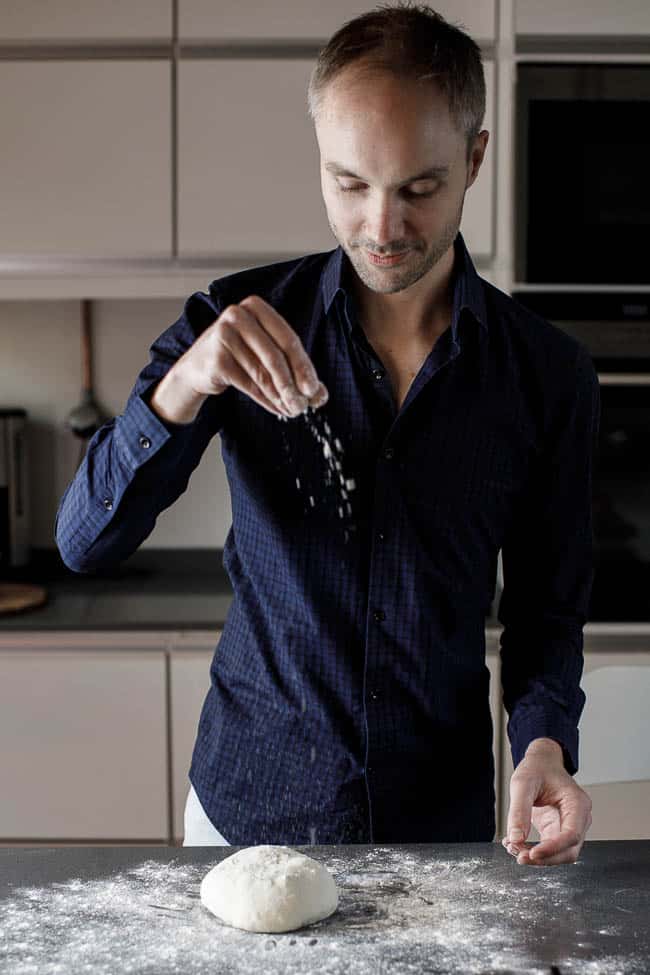
Second, make sure your dough is well kneaded and well rested before shaping. Since this is a very thin flatbread, it’s important that the dough can be stretched properly without tearing.
You should therefore knead the dough until it passes the gluten test. If you stretch the dough, you should be able to create a near transparent “window” before it tears. If the dough tears before this, keep kneading.
It’s important that you use a fatty meat. Lamb mince is naturally fatty. If using beef, or a mixture, make sure your beef mince isn’t lean. I’d argue it should be at least 15-20% fat.
Finally, make sure your topping is well minced and not too wet. It should be wet enough that you can easily spread an evenly thin layer on your flatbread. But it shouldn’t be too wet, or it’ll go soggy. If it’s looking a little on the wet side, drain it for a few minutes before using.
How to serve Turkish flatbread with meat
Lahmacun should always be served hot, straight out of the oven. Unlike pide and pizza, it’s not cut into several smaller pieces. You can cut it in half, or serve it as is, on a large plate.
Alongside, some salad items of your liking. I like flat-leaf parsley and tomato. A squeeze of lemon on top is both traditional and delicious. Make sure you have a few lemon wedges easily at hand, too.
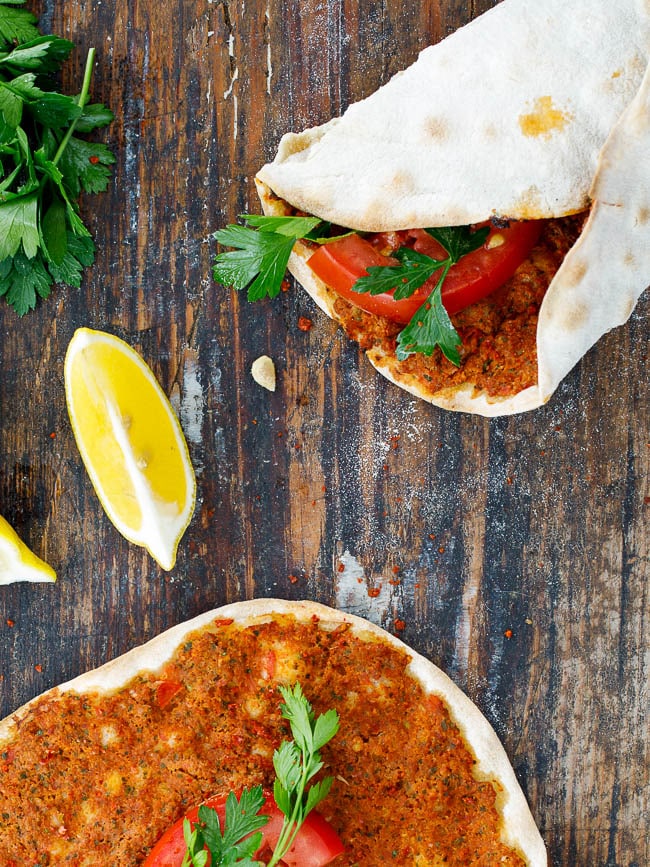
A lot of people like to add a good sprinkle of Aleppo pepper (pul biber) on top too. If you like chili, make sure you place that on the table as well.
If you like pickles, those are great alongside. I’d keep them on the side, though, rather than for stuffing your meaty flatbread.
When you’re ready to serve the lahmacun, it’s each to their own. Put whichever and how much you like of each salad item and chili flakes on your lahmacun. Then roll it up into a wrap and eat with your hands.
If you want another dish alongside your flatbread with meat, I recommend Turkish lentil soup. It works a treat! A nice salad, such as Turkish tomato walnut salad, is also a great idea.
The recipe yields 6-8 lahmacun. Since homemade lahmacun are a little smaller than their restaurant counterparts, allow at least 2 lahmacun per person to be on the safe side.
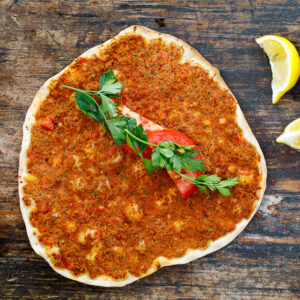
Turkish lahmacun (Crispy flatbread with meat)
Ingredients
- 250 g strong white bread flour, plus extra to bake
- ½ tsp sugar
- 3 g instant (fast action) dried yeast, or 12 g fresh yeast
- 160 ml water, room temperature or colder
- 5 g salt
- ½ Tbsp olive oil
Topping
- 250 g tomato, halved
- 75 g onion
- 2 garlic cloves, peeled
- 30 g flat-leaf parsley
- 200 g minced lamb, or a mixture of lamb or beef
- 1 Tbsp Turkish hot red pepper paste (acı biber salçası), or 2-3 tsp pul biber (Aleppo pepper)
- 1 Tbsp tomato paste
- ¾ tsp salt
- ¼ tsp freshly ground black pepper
To serve (choose what you like)
- a few lemon wedges
- 1 bunch flat-leaf parsley, thick stems discarded
- 2 medium tomato, sliced and sprinkled with a little salt
- pul biber (Aleppo pepper)
- pickled chilis or other pickles
How I make it
- Mix 160 g of the flour with the sugar, yeast and water until it forms a wet dough. Cover and leave until doubled in size, 1-2 hours.
- Add the rest of the flour, the salt and the olive oil. Using a kitchen machine, knead on medium/high speed until smooth and elastic. This usually takes 5-10 minutes, but can vary significantly. Make sure your dough doesn’t get hotter than your body temperature – if it does, cover and place in the fridge for 10-15 minutes before continuing. When you can stretch the dough between your fingers until near-transparent before it breaks, it’s ready. Cover and leave to double in size, around an hour.
- Place a pizza stone or baking stone high up in your oven and turn the heat as high as it goes (mine is 300 °C). Pizza stones and baking stones need anywhere from 10 minutes to 45 minutes to warm up, depending on the material. If you don't have one, simply preheat the oven to its highest temperature.
- When the dough has doubled in size, tip onto a floured surface. Divide into 6-8 equally sized pieces. Shape each piece into a ball by stretching the edges towards the middle repeatedly until you have a firm and smooth surface. Leave the balls to rise a final time, covered and seam-side down, until they have relaxed a little, 15-20 minutes.
- Meanwhile, make the topping. Discard the wet core of the tomatoes. Very finely chop the tomatoes, onion, garlic and flat-leaf parsley until completely mixed. I use a kitchen machine for this. If the mixture looks very wet, drain some of the liquid. Add the mixture to a bowl along the minced meat, red pepper paste, tomato paste, salt and pepper.
- Roll out each piece of dough to a very thin disc. Place it on a floured pizza peel. You can also place it on a baking parchment, if you find that easier. Using your fingers, add a thin layer of the topping mixture to cover the entire flatbread fairly evenly. Don’t worry if there are spots with very little topping. This is normal for lahmacun!
- Bake one or two lahmacun at the time until crispy and golden at the edges, 3-8 minutes, depending on your oven heat and whether you are using a pizza stone or baking stone. If you don’t have one, bake on a regular baking sheet towards the bottom of the oven for 2-4 minutes. Then move it to the top of the oven to finish off, usually another 2-4 minutes.
- Serve immediately with your condiments of choice.


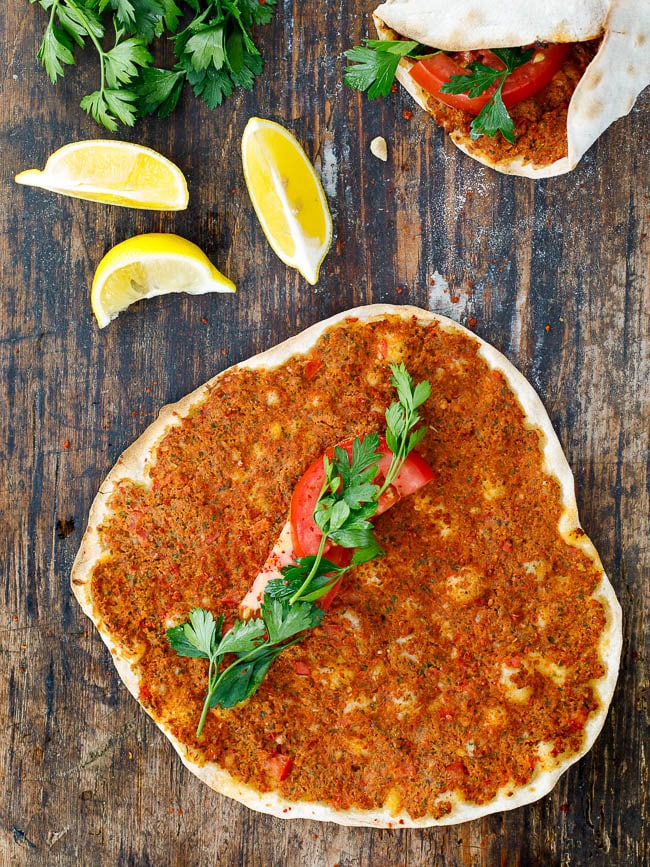


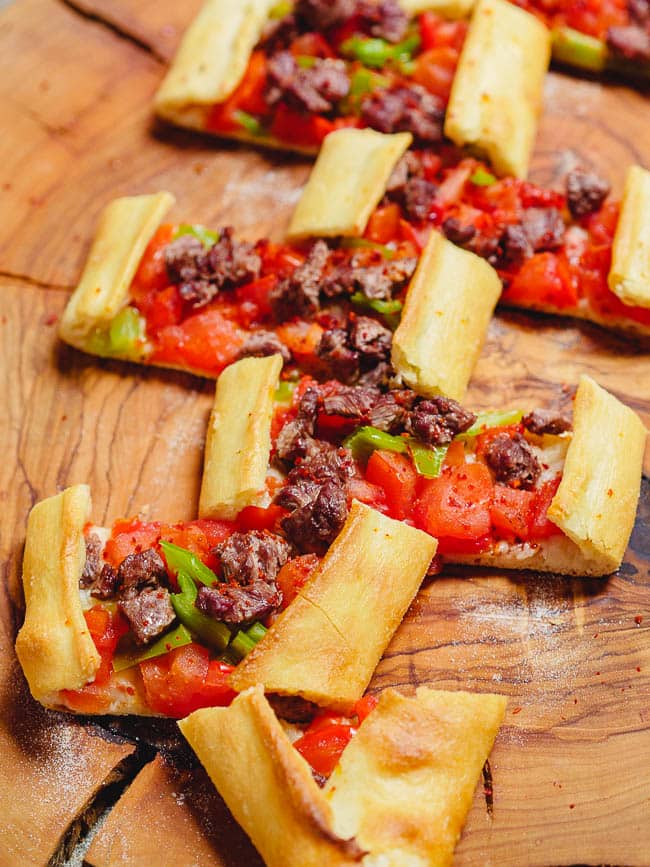
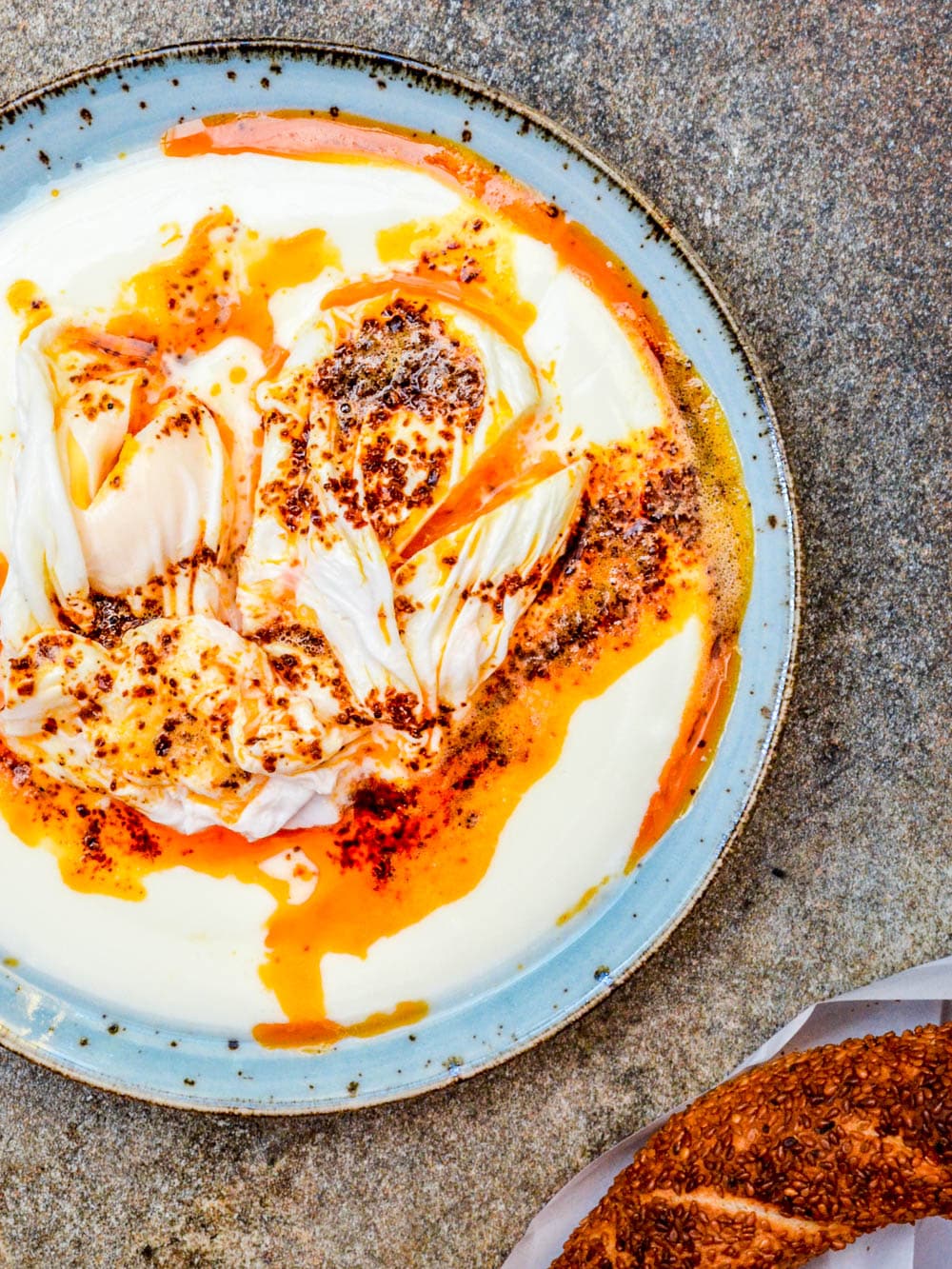
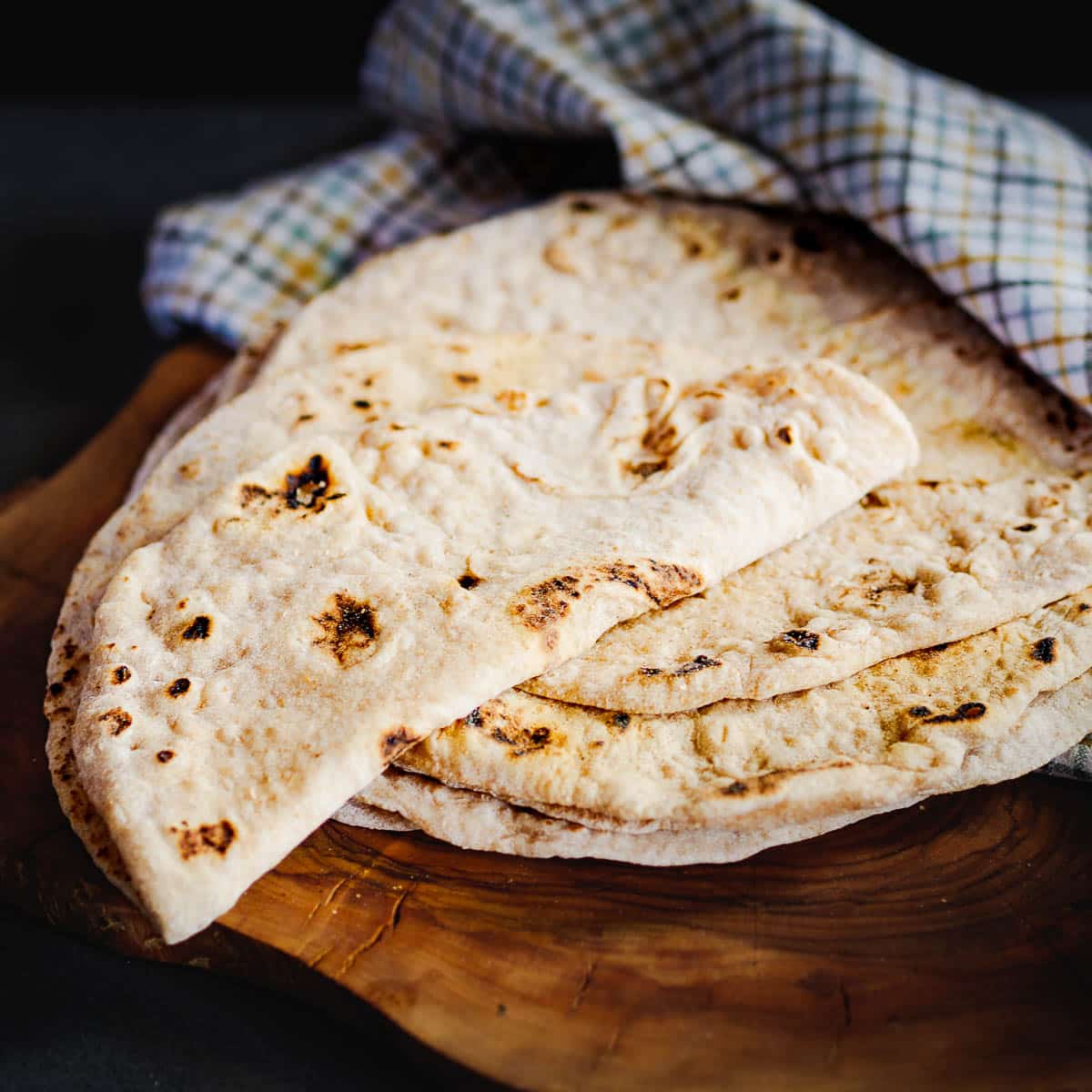
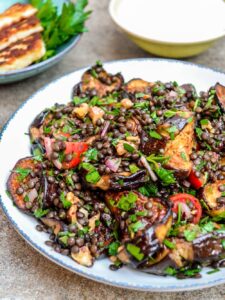
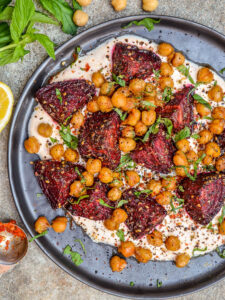
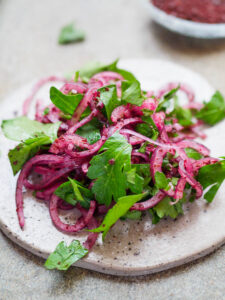




8 responses
Love love love your Lahmacun recipe 😍 so close to the authentic one! I make them once weekly and take leftovers for lunch to work the following day. They are still delicious even after 1 day!
I would love to make your recipes
As soon as I read Antepliler that was it for me.
I totally agree – it is the best lahmacun. I will be trying your recipe at home in my Ooni Pizza oven v soon. Thanks so much!
Loved this recipe! Thank you! It turned out great and it was fun to make!
Yes please! I’d love recipes from you!
Do you ever add semolina to the dough?
I’ve not tried that, no.
Going to try this out! I made your Musakka last night, and it was a hit with everyone at home, even our 14 month old! My husband is Turkish and has been living in the states with me since 2018. We have yet to find a good lahmacun! If you haven’t tried out Dürümcü Emmi on the Asian side of Istanbul, you ought to! We really miss the place!
Afiyet olsun!!